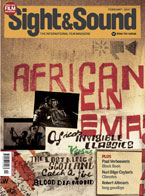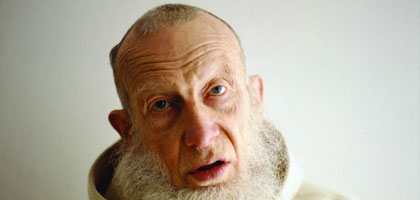Primary navigation

Germany/Switzerland 2005

Reviewed by Catherine Wheatley
Our synopses give away the plot in full, including surprise twists.
France, 2002-03. A documentary about the Grand Prior of the Carthusian Order, a Catholic monastery high in the French Alps. Over the course of six months, the film records the monks' daily routines, following them as they pray, take meals, conduct services and perform their daily labours, all in almost permanent silence. The seasons change as we see the monks take their weekly constitutional walk, first in summer, when they discuss the Order's rituals, then in winter, when they play in the snow. Two initiates join the Order. An old blind monk discusses his faith.
The film is intercut with repeated intertitles bearing biblical quotes.
The Grand Prior of the Carthusian Order, in the mountains near Grenoble, France, is considered one of the Catholic Church's strictest orders. Its members dedicate themselves entirely to the service of God, living self-sufficiently in almost permanent silence. The monks' way of life, consisting of prayers, biblical studies and physical work (they are active farmers and craftsmen), has hardly changed to this day. Compelled to document this extraordinary lifestyle, Philip Gröning first wrote a treatment about the monks in 1984, but was not granted permission to film them until 1999.
That no revisions to Gröning's outline were necessary despite the 15-year delay is testament to the way time stands still within the Grande Chartreuse's walls. In fact, the finished work, Into Great Silence, is as much an essay on the experience of time as an exposé of the ecclesiastical life. In accordance with the conditions imposed by the Order, there is no commentary: instead, the 162-minute film has a cyclical structure, meandering through the day-to-day life of the monastery, repeating images and scenes, sometimes with subtle variants, sometimes not. Against the monks' regimented lifestyle, the passing of the seasons and the fading of light from morning to evening are the only indications of the passage of time. Except for a rather awkward episode towards the film's end in which a blind monk discusses his faith (apparently breaking the condition imposed by the monks that there should be no direct interviews), we are offered no perspective on the individual psychologies of these men. Rather, 'insight through repetition' is Gröning's mantra: the indistinct, almost abstract images that open the film - a glowing candle, the curve of an ear, a flurry of snow - are repeated at the film's close, this time imbued with new significance. Likewise, we come to recognise the significance of the first shuffle of footsteps or a knife slicing through cloth. This is a film not about silence, but about the heightened perception that comes with a pure quality of attention.
The press notes for Into Great Silence describe it as a "unique cinematic experience", and it's difficult to argue with this. Nonetheless, there are some clear points of reference- most obviously visual and thematic convergences with the work of Carl Theodor Dreyer and Robert Bresson. Gröning also devotes a significant proportion of the film to capturing the Order's mountain setting, and his visual appreciation of the natural world- from awe-inspiring cloudswept panoramas to lingering close-ups of the light glinting on a spider's leg - calls to mind Terrence Malick's lush cinematography. More surprising is an apparent Dogme influence, perhaps due in part to the uncredited presence of renowned photographer Anthony Dod Mantle (who shot Von Trier's Manderlay and Winterberg's Dear Wendy, among others) on the second unit. Most of the film is shot on handheld 24P HD, but Super 8 was used for some of the exterior shots, resulting in the occasionally startling juxtaposition of the grainy and the crisp: intentionally or not, this lends another layer of temporality to the film, as if footage from a past era were being edited into a more recent recording.
If all this sounds rather heavy going, Into Great Silence is not without its moments of humour. Its most surprising scene sees the monks sliding down a mountainside in their boots, tumbling over and righting themselves unsteadily, like baby penguins learning to walk. The audience laughs along with them as asceticism makes way for the joy of simple pleasures, the monks suddenly coming into focus as human beings. But even here, Gröning keeps a respectful distance: the film never probes, but simply observes, allowing the audience to take away what they will. So perhaps the extent to which this constitutes a transcendent experience depends on what the individual viewer brings to the table. But it is by no means necessary to be a Catholic to find grace in the film's quiet self-containment and the fraternal affection that these men share, demonstrated by moments such as an ageing monk silently and carefully sweeping stray hairs off a younger man's scalp, having cut his hair. In many ways, Into Great Silence serves as a necessary antidote to the increasing dominance of the media in modern-day living - though there's a certain irony to be found in comparing the quick fix it offers its audience with the lifelong dedication of its subjects.